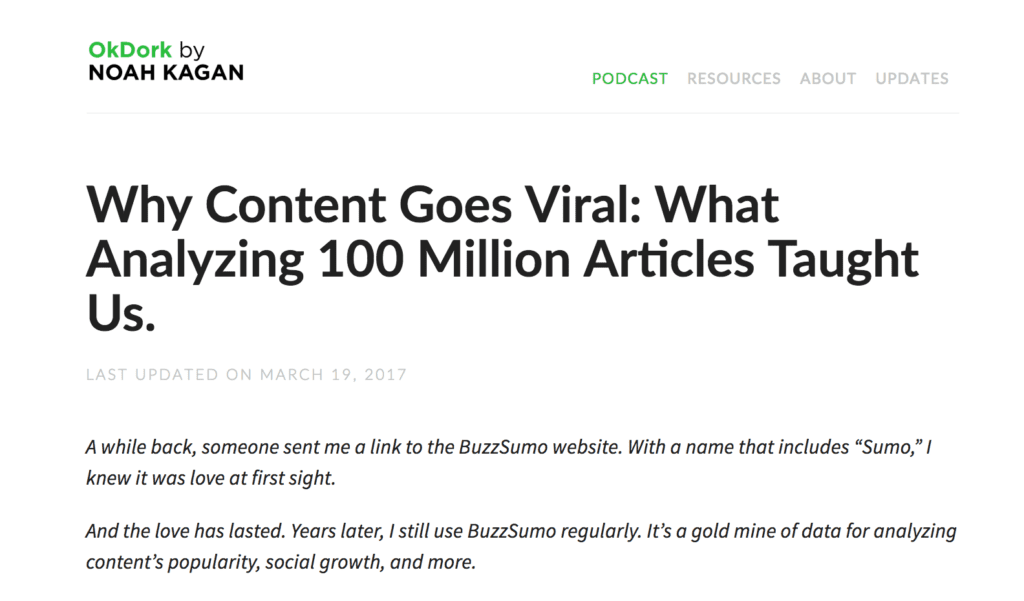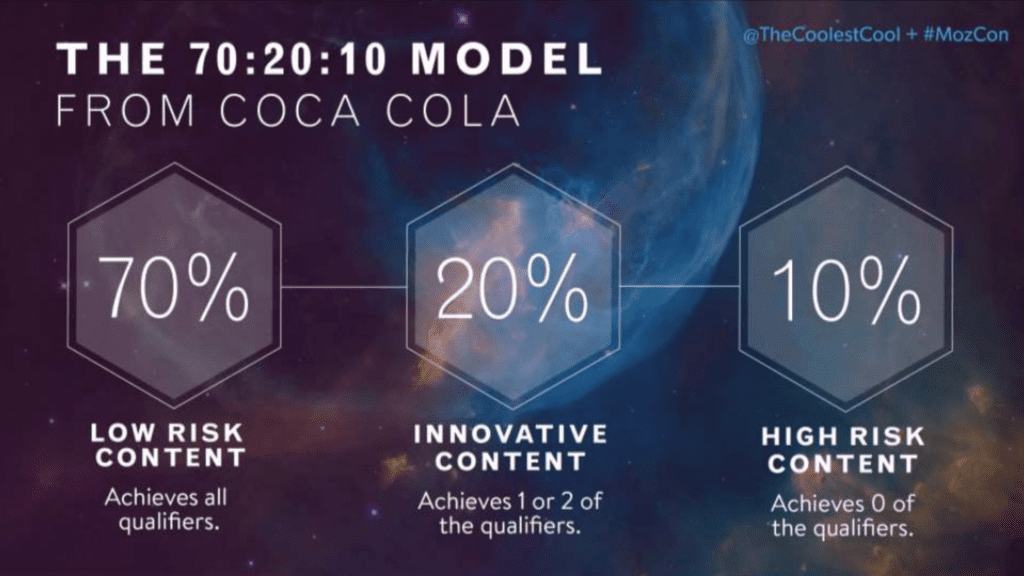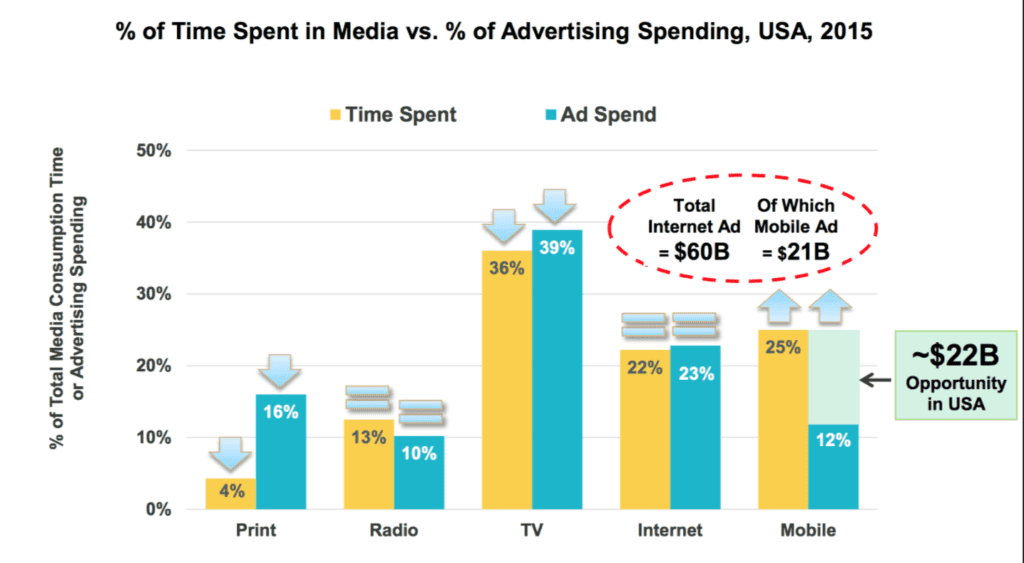When we launch a content marketing strategy, we want to see results quickly.
But many of us are actually met with…crickets.
We pour our heart and soul into uncovering research, crafting new ideas and then bringing those strategies to life. If you’ve ever built a content plan but your blog posts or ebooks were only met with crickets, this piece will arm you with some great insights to ensure that your blog posts get shares and your strategy never flops again.
Over the last few years, I’ve created, revised and enhanced content marketing plans for many brands and organizations. I consistently see marketing mistakes that cause strategies to go off the rails and brands to bleed money into efforts that aren’t working.
In this post, I’m going to dive into 11 content marketing mistakes I see often—and how to fix those mistakes and stop the bleeding.
1. You’re Not REALLY Tracking Your Efforts
Are you receiving a weekly, bi-weekly or monthly report that summarize your content marketing success? If so, I’m hoping that the metrics you’re getting back go a lot further than these:
- Page views
- Site visits
- Average time spent per page
- Follower growth
- Facebook likes
- Retweets
These metrics can definitely be valuable BUT they should not be the backbone of your content strategy. Metrics like this are better described as “vanity metrics.” As Eric Ries explains:
They might make you feel good, but they don’t offer clear guidance for what to do.
We feel good when we see retweets. We feel good when we see a new follower. But if there’s one thing we should all keep in mind as we implement our content strategies, it’s this:
You can’t pay the bills with likes.
That’s why it’s important to go a bit deeper with your measurement. You need to ensure that you have the appropriate technology installed to track what you’re doing and whether your efforts are delivering. Google Analytics is the primary measurement tool but other services like Mixpanel, Kissmetrics or Voluum can also be beneficial.
But it’s not enough to have the right technology installed. You also need to ensure that you’re tracking the right things. If your industry relies heavily on generating leads, it’s likely worth measuring the entire funnel between page visits, lead generation and closed deals. Once you’ve established this as a focus, you can start measuring which lead magnets, articles, ebooks and infographics are converting at the highest level and what role each type plays in your content mix.
The more you track, the more you learn.
The more you learn, the more you earn.
2. You’re Not Collaborating With Other Brands
From Nelly and Kelly to Aerosmith and Run-DMC, collaborations have brought us some great things in music. When it comes to marketing, collaborating on content is a great opportunity for brands.
One of the most popular content-oriented brand collaborations happened when Red Bull and GoPro partnered to sponsor the Stratos Jump, where Felix Baumgartner leaped from space with a GoPro strapped to his chest and Red Bull rushing through his veins.
You might not be a camera company and you might not sell energy drinks.
That’s not the point.
The takeaway here is that two brands came together to take part in one of the most compelling stunts of the last decade. You can take a similar approach by partnering on the creation or distribution of a piece of content that is relevant to your industry. If you’re in the software as a service industry, find an influencer who speaks to your audience but doesn’t compete with you directly and create a co-branded report—like the folks at BuzzSumo did when they wrote this guest post for Noah Kagan:
Or take a more visual approach and spend a month or two promoting a joint webinar. One of the benefits of this approach is that you can also share the leads with both parties. Of course, this will need to be explicitly stated in the fine print, but with the promise of sharing leads, both parties will be incentivized to promote the content and get the word out.
3. You’re Still Sending Paid Traffic To A Generic Homepage
Unless your homepage is Beyonce.com, you’re likely wasting your time.
Stop intentionally sending traffic to a page that is meant to offer options rather than a page that is focused on a single goal. If you’re spending money on advertising, you should also be spending resources on creating landing pages that are connected directly to the audience you’re trying to reach. Creating landing pages with WordPress page builders that offer tons of well-designed layouts or AI website builders to automate the process is the perfect way to get your message across.
If you’re running an ad campaign to target people who live in a certain area, make a landing page that references their location. If you’re running an ad campaign to target a specific job title, make sure the copy on the landing page is about that profession’s pain points. And if you take a look at the best ecommerce landing pages that can make your brand millions of dollars over time, you’ll see they are tailored for well-researched customer persona and only one specific use case.
Customizing your landing pages to match the behaviors, needs and demographics of your audience will increase your chances of getting conversions.
4. You’re Not Adding Gas To Your Distribution Fire
When you notice a piece of content starting to generate traction, don’t sit back and hope that it will continue. Put your headphones in, cancel your afternoon plans and double down your content distribution efforts to let that piece soar!
Add some gas to your distribution fire until the flame is no longer lit!
When it comes to content, any signal that demonstrates that a post is resonating with your audience is a signal worth responding too. The response will always depend on which channel your audience is most active on but your efforts could range anywhere from increasing your paid spend to sending the content to a segmented email list.
Here’s the thing about creating content in the world we live in today:
What’s viral and worth sharing at 5pm on Friday is old content at 8am on Saturday. (Tweet this)
That’s why it’s so important to act quickly.
Distribution is just as important as creating great content. In fact, I’d go so far to say that Content isn’t king, distribution is and that’s where most brands actually drop the ball when it comes to content marketing. That’s why I put together this list of 80+ content distribution tactics for brands and startups. (The list is pretty exhaustive, but if you have any ideas that I missed, I’d love to hear them!)
5. You’re Avoiding Content Experimentation
When was the last time you tried something for the first time?
Seriously. Think about it. I’ll wait.
It’s so easy to get caught up in the day-to-day hustle and bustle that we embrace habits without moving outside of the norm. The same thing happens with content marketing: Brands embrace the tactics and ideas that have been working for decades without attempting anything new.
No new approaches.
No new channels.
No new stories.
That’s the definition of embracing the status quo. Rather than making this mistake, experiment with content marketing the same way you would experiment with two different subject lines on an email. Run content experiments regularly to identify channels that your competition is avoiding and open new streams of leads, customers and results.
When you run a content experiment, ask yourself if the channel you’re using is validated, if the story you’re telling is validated and if the approach you’re taking is validated (Tweet this).
You need to know which parts of your content are risky and which parts are not. If none of these three things are validated, it’s a high-risk piece of content; if your content is validated across the board, then it’s low-risk.
A B2B brand that decides to jump into Reddit marketing for the first time might be embracing a high-risk experiment while a consumer brand that has never blogged before might view blogging as high-risk. It’s all dependent on your organization, the industry and those three risk factors.
One of my favorite ideas for content experiments comes from Coca-Cola’s 2020 plan, where they proposed a 70:20:10 model for experiments. It looks like this:
The idea here is quite simple…
As you create content, 70 percent of your efforts should be low-risk, 20 percent should be innovative, and 10 percent should be high-risk. The reason brands should embrace this method of experimentation is that it allows you to unlock new opportunities without abandoning what you know will work.
For example, if you experiment with high-risk content on a channel that everyone in your industry is ignoring, and you find results, that high-risk channel quickly becomes innovative and eventually low-risk. It could easily take years for your competition to realize what you’re doing, and by then, they’d have nothing but leftovers.
6. You’re Not Repurposing Your Content Into New Formats
We often make the mistake of thinking that a blog post’s life cycle starts the day it’s published and ends the day it’s no longer being shared on social media. After creating content for a few years (or even months), brands amass quite a portfolio of content assets. Once you’ve built up a bank of great assets, you can remix them to further increase their value to the brand.
What do I mean by that?
I mean you can give your content a second chance at life.
If you’ve written a blog post or in-depth article on a specific topic, what else can that asset be turned into? Maybe you can turn that single content asset into a few different resources, such as:
- An instructional video
- A pitch for new podcast interviews
- A SlideShare presentation
- Unique infographics and diagrams
Once you’ve remixed this content, start injecting elements of these new resources into other blog posts on your site or into guest posts for third-party sites.
Let’s say you’ve been running a blog about machine learning for the last few months, and three weeks ago you created a video about automated jobs. Now let’s say you’ve decided to create a blog post titled “How Machine Learning Trends Change The World,” and it just so happens that one of your points is all about the future of automation at work.
What do you think you should do here? Create the content from scratch?
Of course not!
You might write a few new sentences on the topic, but in addition, you’re going to embed that video about automated jobs directly into your blog post.
Over the last few years, I’ve created lots of SlideShare presentations on topics like Instagram, content creation, Periscope, freelancing and more. In fact, I made an investment worth more than $20,000 in SlideShare presentations. Why?
Because I love the remix.
Remixing your content is a great way to be more efficient in your content production while extending the life of old resources and assets, plus it gives you the opportunity to reach audiences that prefer one content format over the next. Win-win-win.
7. You Think Paid Media Is Dead (Tip: It’s Not!)
Have you ever heard of the Law Of The Instrument? Or Maslow’s Hammer? It goes like this:
If your only tool is a hammer, then every problem is going to look like a nail.
It’s so TRUE.
I’m sure you’ve heard way too many content marketers and SEO professionals proclaim that creating great content is the best way to win. Look, I’m over it. As much as I love the idea of investing in channels that produce organic growth and create great content, whether you’re creating SEO content for a law firm or a lawn care businesses, let’s be real. Between algorithm changes on Facebook and sporadic Google updates, paying to have your content distributed is a smart move.
The problem that many marketers face when it comes to paid media is not knowing which channels to invest in. Thankfully, technology makes it easier than ever for brands to put their content in front of the right audience at the right time. It’s easy to feel overwhelmed by the various paid media options but by embracing experimentation, you can test different opportunities and identify the ones that work best for you. Also, a paid media reporting tool can help you come up with informed decisions.
A nearly untapped opportunity for distributing content via advertising is the placement of content on mobile networks and platforms. Take a look at these stats from Mary Meeker’s 2016 internet trends report:
On average, we’re spending 25% of our time consuming content on mobile yet only 12% of advertising budgets are being allocated to this channel. Yet we’re still overspending in both print and television as these channels continue to decline year over year in terms of time spent.
8. You Think Being Cheap Is A GOOD Thing
Here’s the thing:
There’s a difference between being cheap and being efficient.
If you’re nickel-and-diming your partners and suppliers and skimping on your media channels, you can expect mediocre results. While money isn’t the No. 1 motivator for all marketing professionals and content creators, haggling over price can definitely deflate enthusiasm and effort. If you want the people around you to put 100 percent into your content strategy and you want to see real results, you need to invest.
9. You’re Not Embracing Macro & Micro Research
Don’t build a content strategy based on assumptions.
Use research.
Creating and executing a strategy without research is like trying to sail from Greenland to Madagascar without a map—you may get there, but the road will be a rocky one and you might lose a few people along the way. Research offers you the ability to know exactly what type of content will resonate with an audience and increase your chances of distributing that content in channels that make sense.
On a macro level, spend some time understanding shifts in in your industry and amongst your target audience. Look at industry reports, peer-reviewed studies, government data, journals and trend reports to uncover insights that can guide your plans and efforts without assumptions.
Once you’ve uncovered some macro-level insights, dive deep into the micro-research to dig up insights about existing users and channels. It’s very likely that you’re already sitting on a handful of data that a great content marketing team can leverage to reveal more opportunities. Whether you use Google Analytics (for example, leveraging GA4 for SEO), Mixpanel, SEMrush, Moz or even Facebook’s Audience Insights tool, leverage the technologies at your fingertips.
10. Your UX Has More Going On Than A GeoCities Page
Over the last few weeks, I’ve been browsing a number of blogs operated by B2B brands as I work on a new report, and I have to say: The UX on many of these blogs is atrocious.
I’m talking pop-ups all over the place, scrollbars that have a life of their own, and strange ways of populating new blog posts as you hit the bottom of the page.
What do you think these experiences are doing to your readers?
The answer: Making them run away and never come back.
You may have created the best GIF-packed, insight-filled, interactive resource ever, but if the UX is broken, you’ve failed. No one will get through the plethora of pop-ups to even see and enjoy what’s on the other side.
Look: I know that pop-ups can work magic—you’ve probably seen one or two on my site.
But when they continuously get in the way of the reader’s experience and keep readers from achieving their goals, then your pop-ups have gone too far. Get out of the way. Ensure that the experience of using your website is a good one, or the content you’ve created may never be seen and will certainly never be shared.
11. You’re Running Tests With No REAL Reason
From A/B testing subject lines to A/B testing the colour of a submit button, I’ve been in way too many meetings where testing is discussed at length with no discernable direction. If you’re going to spend time talking about an A/B test for a subject line, make sure that the test is actionable and that the results can lead to real insights you can use.
Sometimes marketers will run tests with no goal in mind. That’s a mistake. You need to make time to review the results of your experiments and ensure that you’re using the insights that come from those experiments to influence behavior.
If you’re at an organization where the CEO is always going to have the final say and data doesn’t matter, why waste your time running a test to show him that his picture shouldn’t be on the homepage?
Sometimes the best bet is to double down your energy on things you KNOW you can control or influence. For example, if you’re leading the editorial calendar for your brand, maybe run a one- or two-month experiment where you test a couple of new topics to see which ones are generating the highest converting traffic.
Create a spreadsheet, track the traffic and conversions for the content that falls into each bucket, and make a decision based on the results!
Wrapping Things Up
Well, I certainly didn’t plan on this post being so long, but as it turns out, I’ve seen a LOT of content marketing mistakes.
I really hope you’ve learned something about your own content marketing strategy and how you can improve it—comment below and let me know. If there’s a topic you’d like me to dive into a bit deeper, leave a comment about that too. I’d love to hear from you!
And if your brand already has a content strategy in place, but you feel like it’s falling flat, get in touch. I’d be happy to schedule some time to chat!






